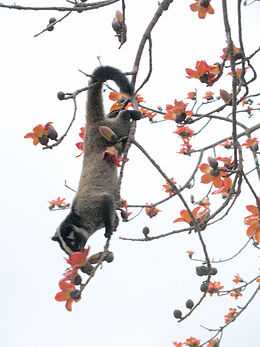Johan Bax van Herenthals
| Johan Bax van Herenthals | |
|---|---|
| 7th Commander of the Cape | |
| In office 14 March 1676 – 29 June 1678 | |
| Preceded by | Isbrand Goske |
| Succeeded by | Hendrik Crudop |
| Personal details | |
| Born | 14 March 1637 's-Hertogenbosch |
| Died | 24 June 1678 (aged 41) Cape Town |

Johan Bax van Herenthals (14 March 1637 's-Hertogenbosch – 29 June 1678, Cape Town), also written as Joan Bax, and van Herentals, was governor of the Dutch Cape Colony from 1676 succeeding the acting interim governor Ijsbrand Godske.[1] Agriculture developed during his term[2] and he is recognized as contributing to the development of Botany and Ethnobiology. He declared two wars with the Khoikhoi.
Biography
Johan Bax was probably the grandson of Joan Bax, governor of Heusden and Muiden. His father Willem Maurits, a captain in the Dutch States Army under Willem Ripperda, married Jeanette Hoefijser in 1630 in Deventer.[3] In 1631 Willem moved to Amsterdam, and according to François Valentijn, Johan Bax was born in 1637 in 's-Hertogenbosch.
He started his service with the Dutch East India Company around 1656. The following year he arrived in Batavia with Hendrik van Rheede and Isaac de l'Ostal de Saint-Martin. In 1663 he was involved in the attack on the Malabar coast under Rijckloff of Goens, in 1667 he stayed in Cochin.
In 1669 at the age of 32, Johan Bax married Aletta Hinloopen (1649–1680), the daughter of Jacob Fransz Hinlopen in Batavia.[4] This made Joan Huydecoper II his uncle.
Bax served as the successor to Van Rheede in Colombo and Galle. There he and Aletta had a daughter who died within a year.[5] He sent his uncle a mango, an acacia, a coconut, a civet and a Negombo devil.[6]
Bax was governor of the Dutch Cape Colony for two years, during which the status of the Cape Colony was reduced by the Dutch East India Company. Bax sent many specimens in to his uncle Huydecoper such as a herbarium, bulbs and seeds, as well as canaries, parakeets, a monkey and a young rhinoceros.[7] Huydecoper sent Bax a gardener from Maarssen.
He was named governor of Ceylon on 25 October 1678, but died and was buried on 4 July after a chest infection.
Due to a shortage of slaves in the Dutch Cape Colony, his widow Aletta sold some of her slaves from Malabar before departing for Batavia.[8]
External links
- http://www.wazamar.org/Familiewapens-in-de-Nederlanden/Familiewapens/Famwpns-NL/Bax/wapen-Bax.htm
- http://www.grafzerkensintjan.nl/grafzerken/35/jan-bax-1552.aspx
- http://www.dbnl.org/tekst/molh003nieu03_01/molh003nieu03_01_0110.php
References
- BACKX. Boeree,Th.A. De kroniek van het geslacht Backx (Bax, Bacx, Bakx en Baks). Een episode uit den strijd tegen Spanje. Wageningen, Vada, 1943. XIV,569 blz. * Bijgevoegd; Registers op de geslachtnamen voorkomende in Th.A.Boeree De kroniek van het geslacht Backx, Wageningen 1943. 16 blz.
- ↑ TANAP Inleiding tot die Resolusies van die Politieke Raad van die Kaap die Goeie Hoop, Bezoek op 1 Mei 2007
- ↑ Math Verstegen (2001): De Indische Zeeherberg. De Stichting van Zuid-Afrika door de V.O.C, p. 76
- ↑ http://www.wazamar.org/Familiewapens-in-de-Nederlanden/Familiewapens/Famwpns-NL/Bax/wapen-Bax.htm
- ↑ http://www.dbnl.org/tekst/molh003nieu03_01/molh003nieu03_01_0110.htm
- ↑ the Journal of the Dutch Burgher Union of Ceylon, a Lecture Delivered by Mr. F. H. De Vos in Aid of the Galle Branch of the Y. M. C. A., Afgelaai op 1 Mei 2007
- ↑ Heniger, J. (1986) Hendrik Adriaan van Reede tot Drakenstein (1636--1691) and Hortus Malabaricus -- A contribution to the history of Dutch colonial botany, p. 82.
- ↑ Heniger, J. (1986) Hendrik Adriaan van Reede tot Drakenstein (1636--1691) and Hortus Malabaricus -- A contribution to the history of Dutch colonial botany, p. 71.
- ↑ Verkoop van slaven door Aletta Hinlopen
| ||||||||||||||

